
FOOD LABELS, THE NEXT GENERATION IN NUTRITIONAL DATA (ISSUE 119)
By Diane Gold
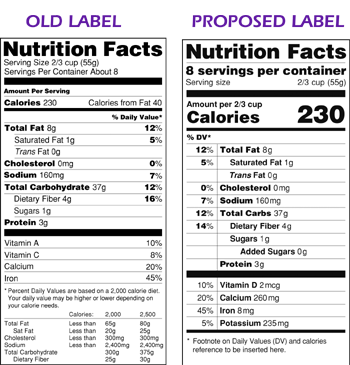 Food labels, the next generation in nutritional data, is being proposed by the Food And Drug Administration. The changes to the nutritional label would help consumers identify food facts more easily, get a more realistic and up-to-date version of what a portion of food in the present day represents and know what sugars in a product are added and not part of the inherent make-up of the food.
Food labels, the next generation in nutritional data, is being proposed by the Food And Drug Administration. The changes to the nutritional label would help consumers identify food facts more easily, get a more realistic and up-to-date version of what a portion of food in the present day represents and know what sugars in a product are added and not part of the inherent make-up of the food.
1970s TO CURRENT FOOD REGULATIONS
I have been researching ingredients and labels since 1971 when I started querying manufacturers about from what source enzymes, lecithin, mono- and di- glycerides, and the myriad of hard-to-pronounce substances. I wanted to know whether they came from an animal, vegetable, mineral, synthetic process. Back in those days, similar to now, many manufacturers did not know that information because they used whatever their suppliers supplied them based upon what was cheapest on the day of purchase.
1970s. The first labels came in the early 1970s when some companies began putting food information on the packaging.
1990. In 1990 came the Nutrition Labeling And Education Act, which required macronutrients on the label: protein, carbohydrates, fats and other data.
1996. The Food Quality Protection Act came in 1996 which regulated some of the pesticides in our food.
2011. The Federal Food, Drug And Cosmetic Act came with more regulation on pesticides, which came from updated reports of the harmful effects these pesticides had on humans and animals through the food they ate.
2014. The Food And Drug Administration has a proposal to upgrade food labels once again. After reading about the changes,
ACTION STEP
Go here to comment, agree, add, disagree:
http://www.regulations.gov/#!docketDetail;D=FDA-2012-N-1210
and leave a comment. When we take action, change happens.
THE PROPOSED CHANGES
1) SERVING SIZE
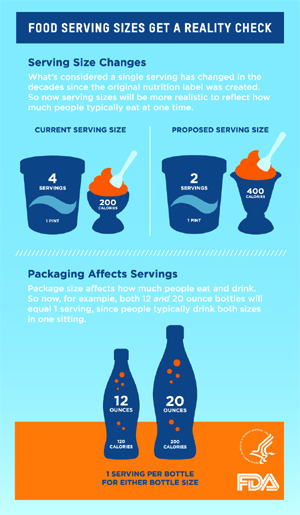 What we used to eat 20 years ago that was listed by FDA as one serving is being recognized as obsolete and totally inaccurate. Due to our larger servings or mislabeling originally, the portion size on the label is being increased. So, if we ate ice cream before the label changes, 1 serving would be 200 calories, half a cup, with 4 servings in the pint.
What we used to eat 20 years ago that was listed by FDA as one serving is being recognized as obsolete and totally inaccurate. Due to our larger servings or mislabeling originally, the portion size on the label is being increased. So, if we ate ice cream before the label changes, 1 serving would be 200 calories, half a cup, with 4 servings in the pint.
The proposed change would list 1 serving as 400 calories, 1 cup, with 2 servings per pint. If I were eating ice cream, which I do infrequently to curb the repercussions from this occurrence, my single serving could be 2 cups, 800 calories, 1 pint. And that’s not including any additional nuts, syrupy fruit, caramel or fresh, ice cream store ice cream.
With the proposed changed, the well-known brand of store-bought designer ice cream I just checked would go from serving size 1/2 cup to 1 cup, since most people don’t eat 1/2 cup.
It’s also possible the FDA will include a dual column label which would allot for accuracy of 2 different sized portions, like 1 cup serving or 2 cups (whole container for a pint) or, with soda, 12 oz. or 24 oz.
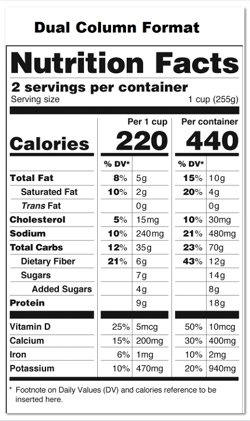 The term cup is helpful because it’s something we can measure. The term container keeps is nebulous since containers range in sizes.
The term cup is helpful because it’s something we can measure. The term container keeps is nebulous since containers range in sizes.
2) ADDED SUGARS
Food labels have a column for sugars. What they don’t say is from where that sugar is derived. They don’t say whether it is from the natural orange in the ingredients or from some additional sugar, added during manufacturing. The FDA proposal asks for a sub-heading called Added Sugars. I believe it will be a percentage so that we will be left to figure out which are natural ingredients and which are added. This would mean we have to be aware that agave, agave nectar, barley malt syrup, beet sugar, brown rice syrup, brown sugar, cane or cane juice crystals, cane sugar, coconut sugar, coconut palm sugar, corn sweetener, corn syrup, corn syrup solids, dehydrated cane juice, dextrin, dextrose, evaporated cane juice, fructose, fruit juice concentrate, glucose, high-fructose corn syrup, honey, invert sugar, lactose, maltodextrin, malt syrup, maltose, maple syrup, molasses, palm sugar, raw sugar, rice syrup, saccharose syrup, sorghum syrup, stevia, sucrose, syrup, treacle, turbinado sugar, xylose are added sugars and sorbitol and maltitol are sugar alcohols.
Why do we care about added sugars?
The American Journal of Clinical Nutrition, 78 (suppl) 827s, 2003 said,
” … excess energy intake from added sugars can potentially lead to nutrient shortcomings, due to displacement of more nutrient-dense foods/beverages, and to weight.”
To clarify nutrient density, here’s Clemson University, South Carolina, Cooperative Extension Service’s definition,
“Foods that supply generous amounts of one or more nutrients compared to the number of calories they supply are called nutrient dense.”
So, if we’re gorging down sweetened soda, we are not ingesting glorious veggie juice, hydrating water or other healthy food that is not reaching us because we are full from nutritionless soda.
It’s important to be aware of ingredients that are sugar. If a product has more than one of these, the split in “actual sugar,” that is, a substance that turns carbs into glucose, gets lower on the label of ingredients since the highest percentage ingredients go first.
3) NUTRIENT REQUIREMENTS
Calcium, Iron stay. Potassium, Vitamin D are added. Vitamins A and C will no longer required.
4) UPDATED DAILY VALUES
The amounts of nutrients needed per day will be updated to match the current scientific information we have.
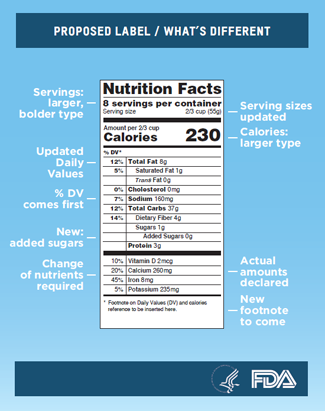
5) DESIGN
The daily values will be on the left side, more visible to the eye, and the serving size and calories will be bigger and bolder so that we become more aware of what our serving size actually is.
Personally, I would like to see every package show the total calories per package, like 1217 calories for a bag of 8 oz. fried, unsalted potato chips, so that when I buy them and eat them in one sitting, I am completely aware of the 79 grams of fat (25g of which is saturated) I consume. Calories are great since they give energy to the body; it’s where they come from that matters. And this one bag exceeds the amount of fat and saturated fat recommended for 1 person in 1 entire day.
ADDICTION ALERT
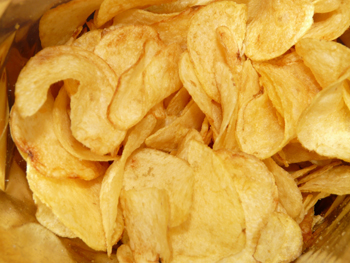 Eating an entire bag of chips, on my part, is possible. It’s similar to my addictive ways with any substance. If I indulge in it once, I will want to indulge again the next day and will have to put forth a concerted effort to replace the potato chip buying behavior with another for, at least, a month, until, if I am lucky, the urge will go dormant again. When I do it, I usually buy baked (reducing the fat grams to 24 greasy grams), since fried will make me feel sick and the craving for grease will require more will power to replace.
Eating an entire bag of chips, on my part, is possible. It’s similar to my addictive ways with any substance. If I indulge in it once, I will want to indulge again the next day and will have to put forth a concerted effort to replace the potato chip buying behavior with another for, at least, a month, until, if I am lucky, the urge will go dormant again. When I do it, I usually buy baked (reducing the fat grams to 24 greasy grams), since fried will make me feel sick and the craving for grease will require more will power to replace.
IMPORTANT CHANGES I WOULD LIKE TO ADD
What are not included in the proposed changes are the following:
1) PROHIBITING NON-SCIENTIFIC VERBIAGE LIKE “NATURAL” AND “FRESH,” words that are meaningless and mislead the uneducated consumer to think these foods are better or organic. We depend upon it to regulate food and drugs, and, thus, should require scientifically founded language only with asterisk to the report on which it is based so that our health knowledge is never based on which company has the best marketing.
2) REQUIRING HARVESTED AND MANUFACTURING DATE AND STATEMENT THAT SAYS SAFE IF USED BY, including the report on which this “use by” info is based. Currently, we have no way to know whether produce is left in a refrigerator for a year or not. With manufacturing, each decides on the length of time after completion date that is safe for a consumer. Therefore, we have no way to know on what data each farmer or manufacturer uses. We have a right to know and for it all to be consistently monitored.
3) LISTING INGREDIENT SOURCES USED IN MANUFACTURING, gathering, packaging process and whether they are animal, plant, part-animal or -plant or synthetic, including defined guidelines for the words animal, vegetable, part and synthetic.
Take isinglass or other animal derivative finings in beer or wine which clears out cloudiness from yeast. There are also glycerol monostearate used for foam on the beer and honey or lactose for flavor. Since these additives exist, every manufacturer should be required to define whether or not its product contains any of these or other ingredients.
4) LISTING THE SOURCE, for ingredients that typically have multiple sources. An example of this would be lecithin, without the word animal, soy or plant-based next to it. When the labels says lecithin, we are guessing at its source. Another very common ingredient is mono-glycerides or mono-and di-glycerides, as they are commonly used together. These emulsifiers can come from animal, plant or synthesized process. If a product lists animal mono-glycerides, there would be no question as to its source, and people could make informed decisions without calling the manufacturer. As it is now, manufacturers only list the details of ingredients to avoid law suits from allergic reactions or if their profits come from a particular religious group that requires it. I would change the regulation to require producer disclosure on all packaging.
5) DISCLOSURE OF WAX AND POLISH, such as waxes on produce or polishing on vitamins tablets. Each manufacturer or produce finisher (the company that sprays wax on fruit before it goes to market) should be required to list the source of the ingredients that are used. Of course, this means that manufacturers would have to keep an up-to-date database of the sources of the ingredients from their suppliers.
Many people are not aware that apples, avocados, peppers are waxed. The wax may be plant-based, bee-based, petroleum-based or synthetic. We deserve to go to the store or market and get our food without having to call the food’s producer before eating it. The food industry is concerned with safety, as it should be. It would do well also to care about informing us of what we consume because we trust them.
CONCLUSION
We depend upon food labels all the time. Their accuracy is crucial for our education and that of children. Eating nutritionally is the one action that can maximize our health, more than any other act. The FDA has the ability to educate us with the nutritional data they approve on packages.
ACTION STEP
It’s great that there is an update coming on food labels. Let’s make some comments at:
http://www.regulations.gov/#!docketDetail;D=FDA-2012-N-1210
to be personally involved, to make a difference and to speak out for what we believe.
There is a finite window for these comments before the proposal goes for a vote. So, let’s make them count toward the next generation of food labels.
____
If you wish to share your story, please hit reply in your email program to be contacted.

FEEDBACK
We value your feedback very much. Please leave a comment below.
Please LIKE us on the website and at WarriorsOfWeight on Facebook. Thanks.


DIANE GOLD, AUTHOR
Diane Gold, Founder of Warriors of Weight, Turning Habits Into Health, is a mentor in tai chi, kung fu and meditation, a music, fitness and stress expert, dedicated mom, studying plant-based nutrition and habit change.
She has been working with food manufacturers for 40 years, inquiring about information not shown on food labels. She says,
“I believe it is the food industry’s job to educate us: not at the expense of profit but, also, not at the expense of foregoing the latest science. The food labeling system should provide for more frequent label updates as the science comes in.
“The manufacturer and the farmer are our teachers in nutritional data. Let us use them wisely in this educational regard.

![]()
![]()
![]()
![]()

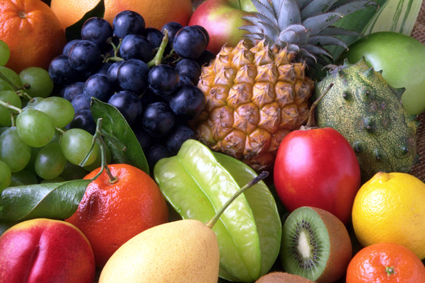 So, back to the produce aisle. I go to the organic fruit or veggies. When I see something I wish to eat, I need to find out what kind of wax coating is on it. The FDA (Food and Drug Administration) has a very biased and inferior regulation about how wax coating has to be labeled. It is not adequate or useful for me. Here, in Title 21 of the Code of Food Regulations 101.4, it says,
So, back to the produce aisle. I go to the organic fruit or veggies. When I see something I wish to eat, I need to find out what kind of wax coating is on it. The FDA (Food and Drug Administration) has a very biased and inferior regulation about how wax coating has to be labeled. It is not adequate or useful for me. Here, in Title 21 of the Code of Food Regulations 101.4, it says,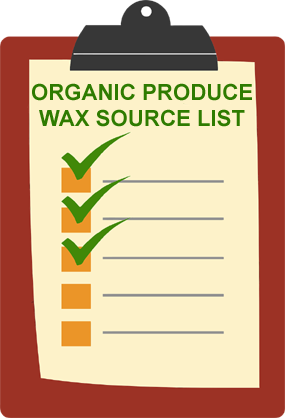 Please hear me and arrange to carry a source list of wax. You are large and powerful, so your farms and finishers will want your business and will do what you ask. I would help you if you asked. What if I am allergic to lac beetle and don’t see the sign that says the word “shellac,” made from lac beetle because it is on the box in the back, out of sight?
Please hear me and arrange to carry a source list of wax. You are large and powerful, so your farms and finishers will want your business and will do what you ask. I would help you if you asked. What if I am allergic to lac beetle and don’t see the sign that says the word “shellac,” made from lac beetle because it is on the box in the back, out of sight?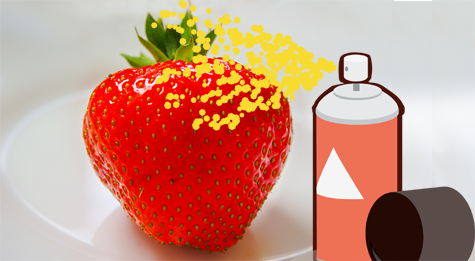 Whether we are parents, teachers, concerned friends; we have to be knowledgeable about what’s on your produce, that is, our produce. In order to be knowledgeable, we have to have knowledge.
Whether we are parents, teachers, concerned friends; we have to be knowledgeable about what’s on your produce, that is, our produce. In order to be knowledgeable, we have to have knowledge. Are we lab rats for which assessment must be made that if pesticides on a food rise beyond our tolerance level, we will die? Or should we protect ourselves should we protect our waterways which means, ultimately, our drinking water?
Are we lab rats for which assessment must be made that if pesticides on a food rise beyond our tolerance level, we will die? Or should we protect ourselves should we protect our waterways which means, ultimately, our drinking water?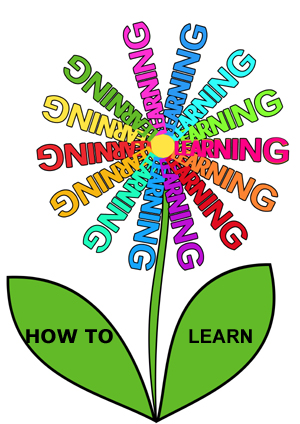 I can’t stress enough the importance of learning how to learn and how important it is to teach this from the start. Whether we are raised through education at home or by going to public or private school, one thing stands out: we each see through a different set of eyes. And our biggest mistake is not making first learners aware so they can decide for themselves the bias of their lessons. Learning How To Learn
I can’t stress enough the importance of learning how to learn and how important it is to teach this from the start. Whether we are raised through education at home or by going to public or private school, one thing stands out: we each see through a different set of eyes. And our biggest mistake is not making first learners aware so they can decide for themselves the bias of their lessons. Learning How To Learn I am the first one to have blind faith and that most of us are good, nurturing and positive. The faith I would blindly follow, though is the understanding that we are all human, and humans, sometimes, without even knowing it, have internal agendas. When we are just born, we have not been influenced enough to be deceitful. After that, we can trust that the human spirit can be fickle. We can be blindly faithful in knowing that we all do our best to pass on the lesson, although doing our best usually includes our being influenced by how we have chosen to perceive the world.
I am the first one to have blind faith and that most of us are good, nurturing and positive. The faith I would blindly follow, though is the understanding that we are all human, and humans, sometimes, without even knowing it, have internal agendas. When we are just born, we have not been influenced enough to be deceitful. After that, we can trust that the human spirit can be fickle. We can be blindly faithful in knowing that we all do our best to pass on the lesson, although doing our best usually includes our being influenced by how we have chosen to perceive the world.
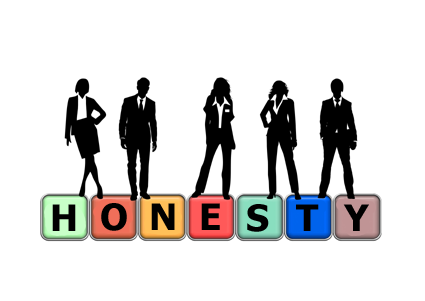 Let’s say we are going to hear a panel on whether it’s a good idea to genetically modify foods. As at any debate, we would hope to have all views present. In this case, the head speaker is the director of genetically modified foods industry, one panelist is in that person’s pocket and the third panelist is known not to speak out about GMOs.
Let’s say we are going to hear a panel on whether it’s a good idea to genetically modify foods. As at any debate, we would hope to have all views present. In this case, the head speaker is the director of genetically modified foods industry, one panelist is in that person’s pocket and the third panelist is known not to speak out about GMOs. In order to work this idea of emptying ourselves so that we can fill ourselves with knowledge, a basic learning how to learn principal; we must come up with some trust system by which we live. The one I live by is that we blindly believe that we all do our best, but we are not perfect and show understanding when someone else is not or when we, ourselves, are not.
In order to work this idea of emptying ourselves so that we can fill ourselves with knowledge, a basic learning how to learn principal; we must come up with some trust system by which we live. The one I live by is that we blindly believe that we all do our best, but we are not perfect and show understanding when someone else is not or when we, ourselves, are not.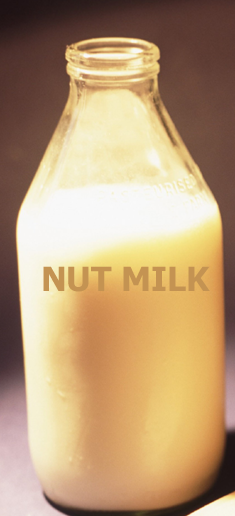 Nut milk is one of the most delicious, nutritious foods I have ever had the pleasure of ingesting, and, of late, of preparing. Until about a week ago, I had always bought nut milk: almond milk, flax milk, soy milk. The process began when I no longer chose to drink flax milk that was not organic. I had been happily buying this wonderful flax milk whose manufacturers promised they were working on putting out an organic version.
Nut milk is one of the most delicious, nutritious foods I have ever had the pleasure of ingesting, and, of late, of preparing. Until about a week ago, I had always bought nut milk: almond milk, flax milk, soy milk. The process began when I no longer chose to drink flax milk that was not organic. I had been happily buying this wonderful flax milk whose manufacturers promised they were working on putting out an organic version.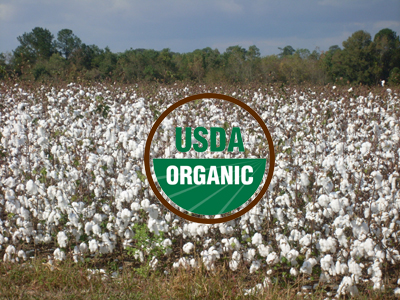 The instruction included the use of some type of straining cloth as for tofu or gauze which I didn’t have so I haven’t been using, plus my smoothies are always very thick and full of seed fiber. Another interesting thing is that it is not very common to find organic cotton tofu cloth. This means the alternative would somewhat defeat the idea of using organically grown, non-GMO, nuts or seeds, since most cotton is genetically modified and would have the distinction of being certified non-GMO if it were organic. So I had hesitated in the past.
The instruction included the use of some type of straining cloth as for tofu or gauze which I didn’t have so I haven’t been using, plus my smoothies are always very thick and full of seed fiber. Another interesting thing is that it is not very common to find organic cotton tofu cloth. This means the alternative would somewhat defeat the idea of using organically grown, non-GMO, nuts or seeds, since most cotton is genetically modified and would have the distinction of being certified non-GMO if it were organic. So I had hesitated in the past.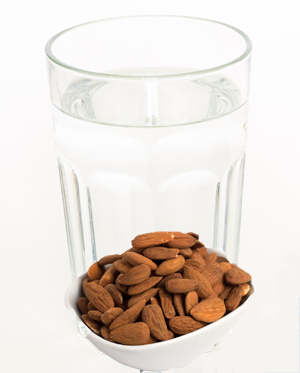 I put 2 cups of filtered water in a glass with a little more than a half cup of almonds, fulfilling my ratio of 4 to 1 for nut milk. I found some chlorine-free parchment paper and covered the glass. I still haven’t figured out a way to stabilize the covering, but I put the glass in the refrigerator overnight. The next morning, I put the water and the almonds in the blender and blended for about a minute. What I got was thicker than the store bought variety nut milk, was a lovely organic, perfectly fresh nut milk and did not contain any of the gums or supplements possibly made from the synthetics that are allowed by the Organic Board. And, look, Mom and Dad, I made it myself.
I put 2 cups of filtered water in a glass with a little more than a half cup of almonds, fulfilling my ratio of 4 to 1 for nut milk. I found some chlorine-free parchment paper and covered the glass. I still haven’t figured out a way to stabilize the covering, but I put the glass in the refrigerator overnight. The next morning, I put the water and the almonds in the blender and blended for about a minute. What I got was thicker than the store bought variety nut milk, was a lovely organic, perfectly fresh nut milk and did not contain any of the gums or supplements possibly made from the synthetics that are allowed by the Organic Board. And, look, Mom and Dad, I made it myself.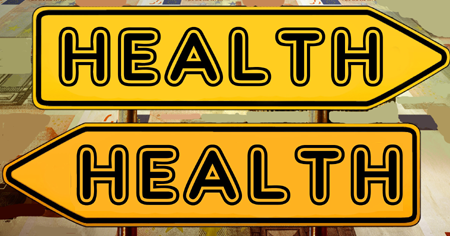 There’s one great reason to drink nut milk: we love ourselves and care about our health. According to the Physicians Committee For Responsible Medicine, 75% of the world (25% in the US) is lactose intolerant. This is true because most of us lose our lactase enzyme (present in babies and toddlers) which allows us to successfully break down milk for use by the bloodstream. So, some of us, after age 3, cannot break down milk and notice difficulty in drinking it.
There’s one great reason to drink nut milk: we love ourselves and care about our health. According to the Physicians Committee For Responsible Medicine, 75% of the world (25% in the US) is lactose intolerant. This is true because most of us lose our lactase enzyme (present in babies and toddlers) which allows us to successfully break down milk for use by the bloodstream. So, some of us, after age 3, cannot break down milk and notice difficulty in drinking it.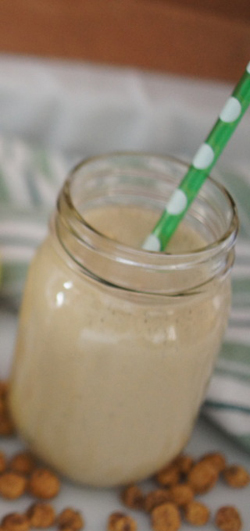 Aside from the health aspects, nut milk made easily is a supreme convenience for me. It means I can make nut milk as long as I have nuts and a blender.
Aside from the health aspects, nut milk made easily is a supreme convenience for me. It means I can make nut milk as long as I have nuts and a blender.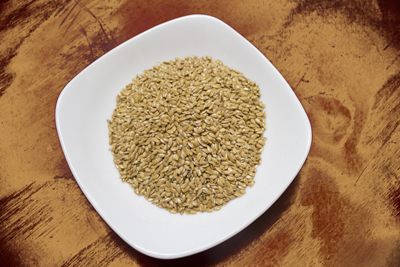 I soak flax seeds overnight, and then, I grind them to break open the hulls. This is a mess. But, I like it. It’s less money than buying the high speed machine that devours every part of every food so grinding is not needed.
I soak flax seeds overnight, and then, I grind them to break open the hulls. This is a mess. But, I like it. It’s less money than buying the high speed machine that devours every part of every food so grinding is not needed.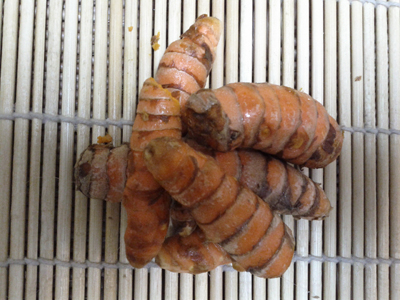 Turmeric benefits have been known in India for thousands of years. This spice has been used by many tribes, throughout many cultures with a myriad of applications. It spread from India to China to the East Indies (it’s naturalized in Jamaica now), to Polynesia, Hawaii, East Africa, West Africa and is a staple in many kitchens and medicine chests.
Turmeric benefits have been known in India for thousands of years. This spice has been used by many tribes, throughout many cultures with a myriad of applications. It spread from India to China to the East Indies (it’s naturalized in Jamaica now), to Polynesia, Hawaii, East Africa, West Africa and is a staple in many kitchens and medicine chests. In the abstract of the study reported in Journal Of Nutritional Biochemistry, it states that this 6-month use of turmeric showed an increase in adiponectin levels increased and a decrease in leptin levels. These hormones, in the reported measures, are distinctly connected with lowered appetite, indicating a possible reason for lowered weight with the use of turmeric in Type 2 diabetics.
In the abstract of the study reported in Journal Of Nutritional Biochemistry, it states that this 6-month use of turmeric showed an increase in adiponectin levels increased and a decrease in leptin levels. These hormones, in the reported measures, are distinctly connected with lowered appetite, indicating a possible reason for lowered weight with the use of turmeric in Type 2 diabetics.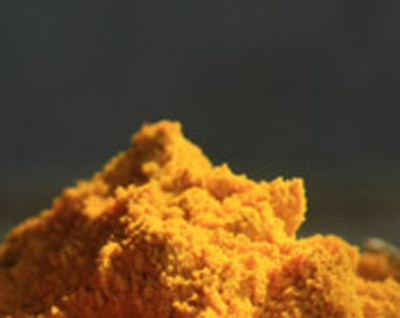 Turmeric, or its main ingredient, curcumin, may positively affect brain function in Alzheimer’s patients. The NIH abstract from a study published in Annals of Indian Academy Of Neurology, Jan-Mar, 2008, (ncbi.nlm.nih.gov/pmc/articles/PMC2781139) says,
Turmeric, or its main ingredient, curcumin, may positively affect brain function in Alzheimer’s patients. The NIH abstract from a study published in Annals of Indian Academy Of Neurology, Jan-Mar, 2008, (ncbi.nlm.nih.gov/pmc/articles/PMC2781139) says,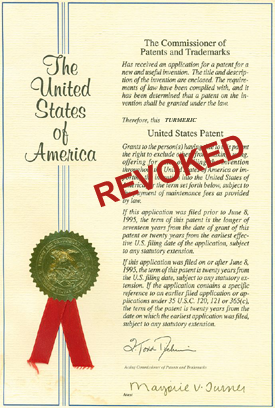 Very important for turmeric’s survival as a NON-PHARMACEUTICAL substance, is the United States patent that was given to University of Mississippi in 1995 for wound healing that, in 1997, due to a piracy complaint by The Council for Industrial Research stating that turmeric had been in use for thousands of years in India, was REVOKED.
Very important for turmeric’s survival as a NON-PHARMACEUTICAL substance, is the United States patent that was given to University of Mississippi in 1995 for wound healing that, in 1997, due to a piracy complaint by The Council for Industrial Research stating that turmeric had been in use for thousands of years in India, was REVOKED.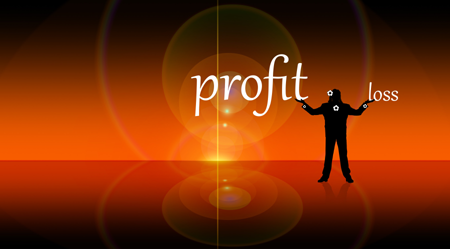 The only way a drug company would output the median amount per drug development, $350 million (according to Forbes’ Aug. 11, 2013, article citing Innothink Center For Research In Biomedical Innovation with the statistic) for a substance to be approved by the FDA (Food And Drug Administration) to market would be if the outcoming drug were patentable.
The only way a drug company would output the median amount per drug development, $350 million (according to Forbes’ Aug. 11, 2013, article citing Innothink Center For Research In Biomedical Innovation with the statistic) for a substance to be approved by the FDA (Food And Drug Administration) to market would be if the outcoming drug were patentable.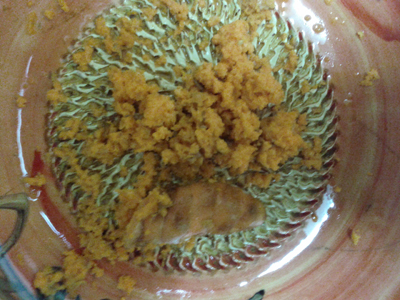 All in all, turmeric is great. I eat it every day. It’s one of the few veggies I eat that I will buy even if it’s not organic – because turmeric is good for me and even though, in 2008, the Hungarian Food Safety Office reported a crop of Thai turmeric to contain over 10 times their acceptable level of the pesticides methomyl and thiobicarb.
All in all, turmeric is great. I eat it every day. It’s one of the few veggies I eat that I will buy even if it’s not organic – because turmeric is good for me and even though, in 2008, the Hungarian Food Safety Office reported a crop of Thai turmeric to contain over 10 times their acceptable level of the pesticides methomyl and thiobicarb.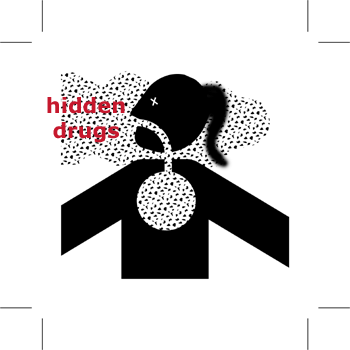
 I finished the test with no major reactions and went on my merry way, although I felt violated. Almost immediately after leaving the medical office, I started feeling speedy. And then more speedy, and then more speedy, to the point where I was sweating with my heart’s racing; I knew I was sick and was having a reaction to albuterol.
I finished the test with no major reactions and went on my merry way, although I felt violated. Almost immediately after leaving the medical office, I started feeling speedy. And then more speedy, and then more speedy, to the point where I was sweating with my heart’s racing; I knew I was sick and was having a reaction to albuterol. Since I lived, my mind started to run away with me, and I thought about running to get my medical records for the attorney. I calmed down and realized a much better solution instead of pointing fingers, blaming and taking to the legal system I so revere.
Since I lived, my mind started to run away with me, and I thought about running to get my medical records for the attorney. I calmed down and realized a much better solution instead of pointing fingers, blaming and taking to the legal system I so revere.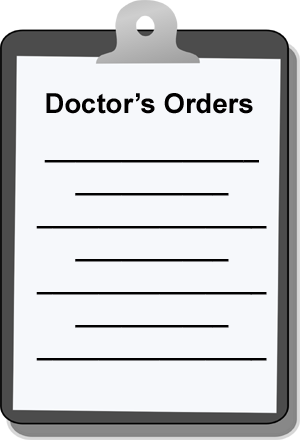
 Although the Hippocratic Oath, taken by every MD, includes keeping oneself away from seduction; the biggest seduction and the one most difficult to see as we are being seduced is the seduction of the ego, thinking we are the skilled, the almighty and the awakener with a better solution than the patient. The Osteopathic Oath mentions retaining the respect of the patient. If we are filled with ego and if we disrespect our patient’s rights, how are we fulfilling our oath?
Although the Hippocratic Oath, taken by every MD, includes keeping oneself away from seduction; the biggest seduction and the one most difficult to see as we are being seduced is the seduction of the ego, thinking we are the skilled, the almighty and the awakener with a better solution than the patient. The Osteopathic Oath mentions retaining the respect of the patient. If we are filled with ego and if we disrespect our patient’s rights, how are we fulfilling our oath?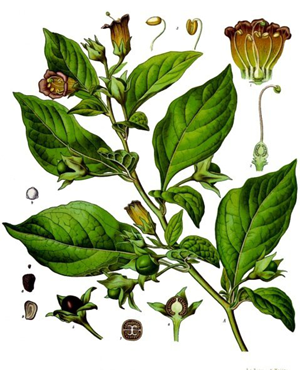 In conclusion, it’s important to be aware that the doctor is a consultant from whom we can hear expert opinion. S/he has studied hard to be able to evaluate a certain brand and branch of medicine. Unfortunately, the doctor who has studied Eastern medicine, Western medicine, Native American medicine, Latin American plant medicine and international tribal medicine is in the best position to give medical guidance; but I don’t know of any who have all this training.
In conclusion, it’s important to be aware that the doctor is a consultant from whom we can hear expert opinion. S/he has studied hard to be able to evaluate a certain brand and branch of medicine. Unfortunately, the doctor who has studied Eastern medicine, Western medicine, Native American medicine, Latin American plant medicine and international tribal medicine is in the best position to give medical guidance; but I don’t know of any who have all this training.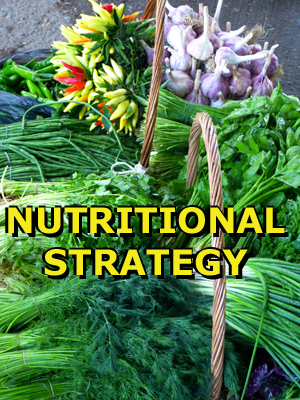
 Wouldn’t it be nice if the plant based food industry were a cooperative in itself and could get a direct benefit from creating such a course for medical professionals the way pharmaceutical companies benefit directly from courses they give on their new drugs as solutions for specific diagnoses.
Wouldn’t it be nice if the plant based food industry were a cooperative in itself and could get a direct benefit from creating such a course for medical professionals the way pharmaceutical companies benefit directly from courses they give on their new drugs as solutions for specific diagnoses.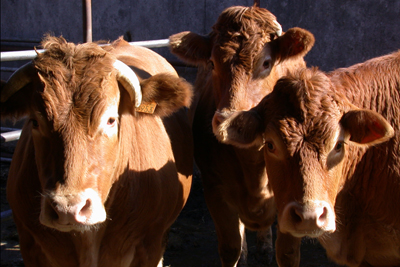 The habit of eating meat is passed down from one generation to another, in most societies. Throughout the years, a symbol of abundance has become the finest steak dinner, so much so that, at one point, the overproduction of uric acid crystals between the joints known as gout, got the nickname “disease of the rich” because wealth often meant increased intake of animal proteins.
The habit of eating meat is passed down from one generation to another, in most societies. Throughout the years, a symbol of abundance has become the finest steak dinner, so much so that, at one point, the overproduction of uric acid crystals between the joints known as gout, got the nickname “disease of the rich” because wealth often meant increased intake of animal proteins.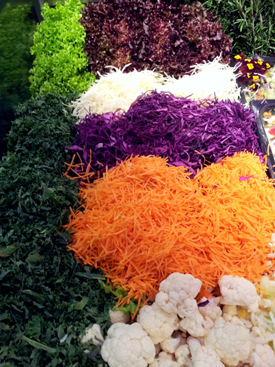 What is now becoming common knowledge, or is such to the Millenial generation and after, is that hunger and thirst could be contained if we increased our plant-based nutrition consumption; we could reduce many chronic diseases if we reduced or removed meat from our diet; our water footprint to farm livestock for food is sending the world economies on a downward spiral of water emergencies; especially in the latest generation, people are questioning whether it is ethical to eat meat (which could includes but is not limited to beef, pork, lamb, chicken, fish, bees).
What is now becoming common knowledge, or is such to the Millenial generation and after, is that hunger and thirst could be contained if we increased our plant-based nutrition consumption; we could reduce many chronic diseases if we reduced or removed meat from our diet; our water footprint to farm livestock for food is sending the world economies on a downward spiral of water emergencies; especially in the latest generation, people are questioning whether it is ethical to eat meat (which could includes but is not limited to beef, pork, lamb, chicken, fish, bees). 3)
3)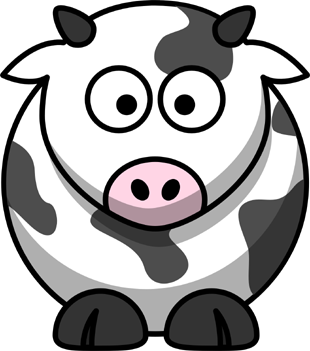 For those not calculating, if antibiotics are used in animal feed, the drug companies get paid for their drugs and farmers get to fatten up their livestock more quickly from the antibiotics so they reduce feeding expense. This translates to a less healthy environment, chemically altered food and reduced health.
For those not calculating, if antibiotics are used in animal feed, the drug companies get paid for their drugs and farmers get to fatten up their livestock more quickly from the antibiotics so they reduce feeding expense. This translates to a less healthy environment, chemically altered food and reduced health.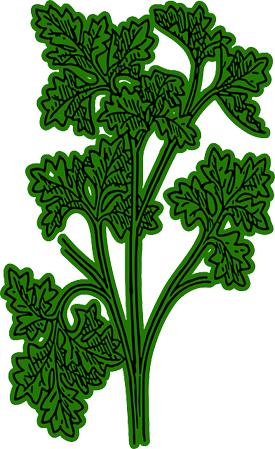
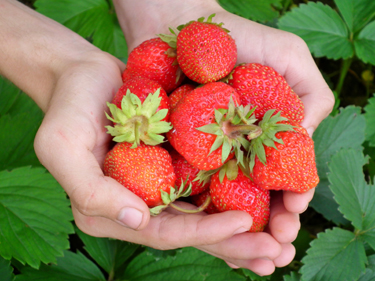 Instead of blindly consuming food, just because it tastes good to us, we might want to consider the consequences of our actions. Not following in the footsteps of the past generations, we might want to evaluate the newest scientific evidence about food and nutrition. We might choose to realize that the dairy and meet industries have vast sums of money to promote the idea of eating meat or consuming dairy. Big media are friends with big dairy, big meat, big poultry and big pharma. These relationships may be cause for us to do our own research on whether the habit of eating meat needs a complete turnaround in 2014.
Instead of blindly consuming food, just because it tastes good to us, we might want to consider the consequences of our actions. Not following in the footsteps of the past generations, we might want to evaluate the newest scientific evidence about food and nutrition. We might choose to realize that the dairy and meet industries have vast sums of money to promote the idea of eating meat or consuming dairy. Big media are friends with big dairy, big meat, big poultry and big pharma. These relationships may be cause for us to do our own research on whether the habit of eating meat needs a complete turnaround in 2014.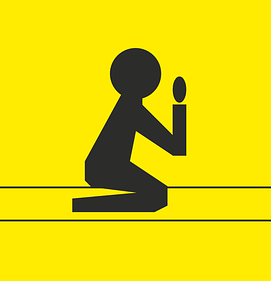 3)
3) Food labels, the next generation in nutritional data, is being proposed by the Food And Drug Administration. The changes to the nutritional label would help consumers identify food facts more easily, get a more realistic and up-to-date version of what a portion of food in the present day represents and know what sugars in a product are added and not part of the inherent make-up of the food.
Food labels, the next generation in nutritional data, is being proposed by the Food And Drug Administration. The changes to the nutritional label would help consumers identify food facts more easily, get a more realistic and up-to-date version of what a portion of food in the present day represents and know what sugars in a product are added and not part of the inherent make-up of the food. What we used to eat 20 years ago that was listed by FDA as one serving is being recognized as obsolete and totally inaccurate. Due to our larger servings or mislabeling originally, the portion size on the label is being increased. So, if we ate ice cream before the label changes, 1 serving would be 200 calories, half a cup, with 4 servings in the pint.
What we used to eat 20 years ago that was listed by FDA as one serving is being recognized as obsolete and totally inaccurate. Due to our larger servings or mislabeling originally, the portion size on the label is being increased. So, if we ate ice cream before the label changes, 1 serving would be 200 calories, half a cup, with 4 servings in the pint. The term cup is helpful because it’s something we can measure. The term container keeps is nebulous since containers range in sizes.
The term cup is helpful because it’s something we can measure. The term container keeps is nebulous since containers range in sizes.
 Eating an entire bag of chips, on my part, is possible. It’s similar to my addictive ways with any substance. If I indulge in it once, I will want to indulge again the next day and will have to put forth a concerted effort to replace the potato chip buying behavior with another for, at least, a month, until, if I am lucky, the urge will go dormant again. When I do it, I usually buy baked (reducing the fat grams to 24 greasy grams), since fried will make me feel sick and the craving for grease will require more will power to replace.
Eating an entire bag of chips, on my part, is possible. It’s similar to my addictive ways with any substance. If I indulge in it once, I will want to indulge again the next day and will have to put forth a concerted effort to replace the potato chip buying behavior with another for, at least, a month, until, if I am lucky, the urge will go dormant again. When I do it, I usually buy baked (reducing the fat grams to 24 greasy grams), since fried will make me feel sick and the craving for grease will require more will power to replace.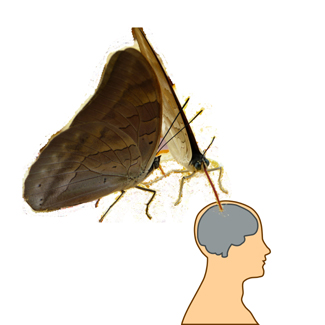
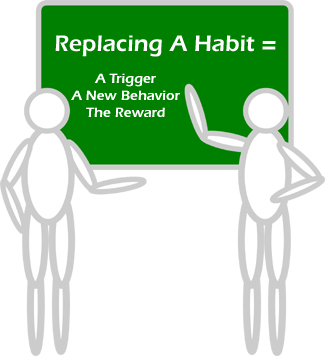 So, here’s this task we have for ourselves. We have a habit, and we want to replace it.
So, here’s this task we have for ourselves. We have a habit, and we want to replace it.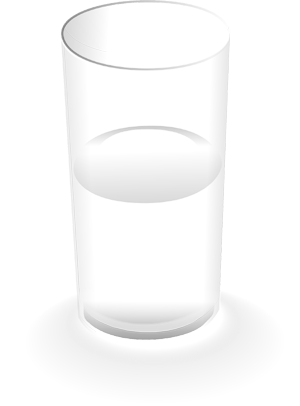 Consider the glass’ being half empty or half full concept. When the glass is full, we think of richness. The empty term, in Western terms, can speak to barrenness, although, in the Eastern way, emptiness is the way to abundance.
Consider the glass’ being half empty or half full concept. When the glass is full, we think of richness. The empty term, in Western terms, can speak to barrenness, although, in the Eastern way, emptiness is the way to abundance.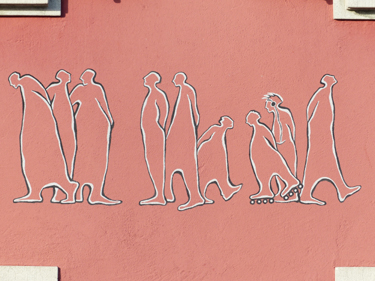 Be careful of the feeling of boredom. It can act as a built-in excuse for doing a certain behavior that is not good for us. We might think that if we had excitement rather than stagnation in our lives, we would not act out the behavior we wanted to change. We might even create the boredom to delude ourselves.
Be careful of the feeling of boredom. It can act as a built-in excuse for doing a certain behavior that is not good for us. We might think that if we had excitement rather than stagnation in our lives, we would not act out the behavior we wanted to change. We might even create the boredom to delude ourselves.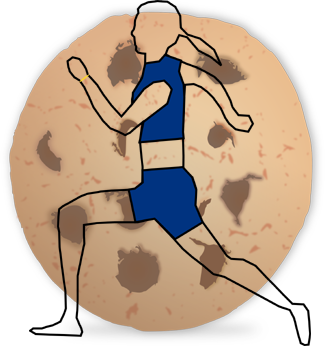 Let’s say we always get the urge to eat dessert. We can change our reaction to this trigger by planning another behavior in its stead, such as going jogging as soon as that urge is felt. This will begin the process of replacement. Repeating this behavior will turn it into a habit. By behaving consistently by jogging and not dessert eating, we will have replaced our old with the new behavior. Although this certainly is quitting acting out the old behavior from the sheer repetition of the act; it’s easier to accomplish by using the concept of “replace.”
Let’s say we always get the urge to eat dessert. We can change our reaction to this trigger by planning another behavior in its stead, such as going jogging as soon as that urge is felt. This will begin the process of replacement. Repeating this behavior will turn it into a habit. By behaving consistently by jogging and not dessert eating, we will have replaced our old with the new behavior. Although this certainly is quitting acting out the old behavior from the sheer repetition of the act; it’s easier to accomplish by using the concept of “replace.”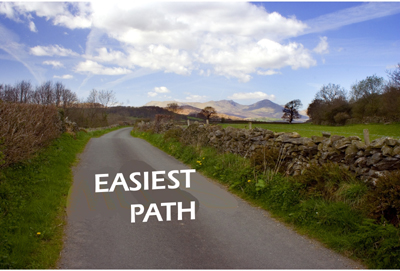 Of course, when we want to do something new in place of some old habit, we want to give ourselves the easiest path to follow. That path involves planning one simple action that will be repeated over and over again. It also requires saying “replace” instead of “quit.”
Of course, when we want to do something new in place of some old habit, we want to give ourselves the easiest path to follow. That path involves planning one simple action that will be repeated over and over again. It also requires saying “replace” instead of “quit.”





